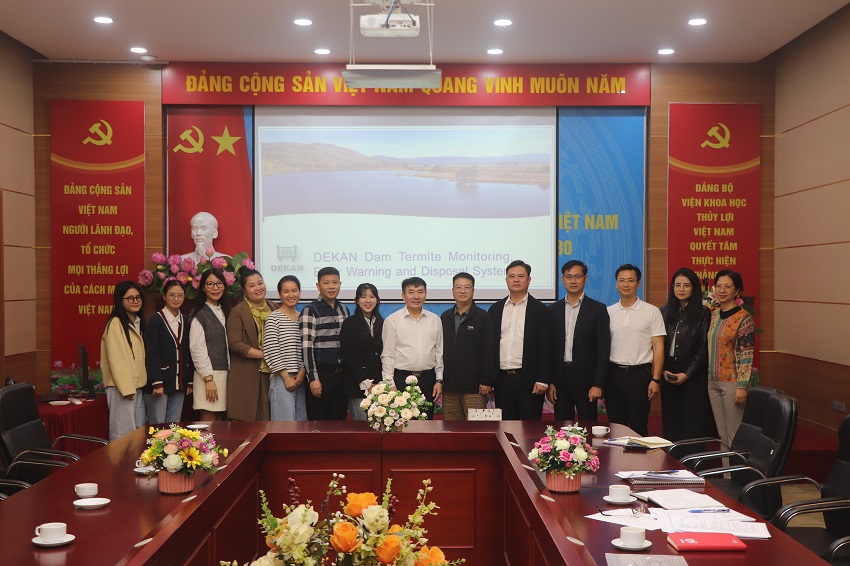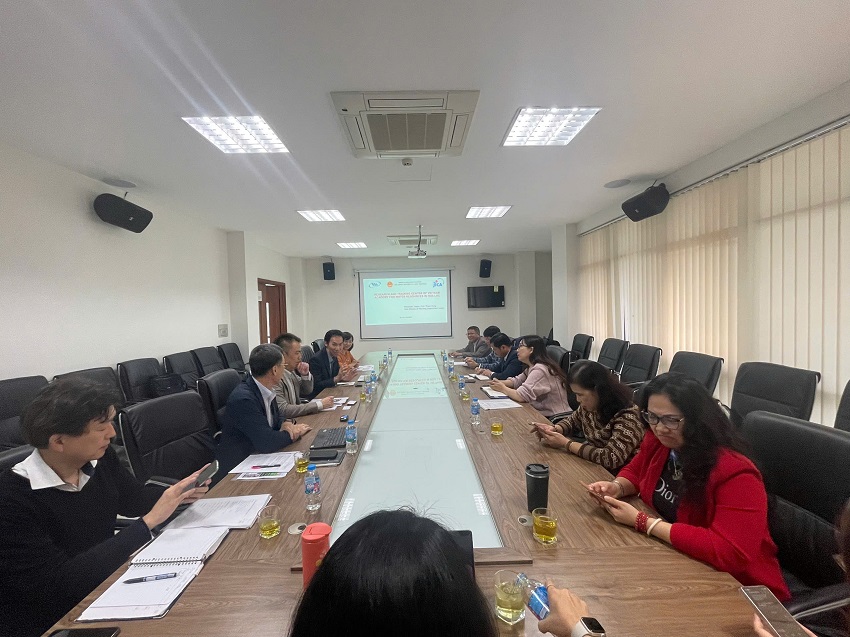Tổng quan ứng dụng phương pháp học máy trong dự báo lũ
25/01/2024Với tầm quan trọng của việc dự báo và cảnh báo lũ, các nghiên cứu tập trung vào ứng dụng các mô hình học máy vào các bài toán dự báo lũ đang ngày càng được quan tâm. Trong bài báo này, chúng tôi tổng quan lại các bài nghiên cứu gần đây về ứng dụng của học máy trong lĩnh vực về dự báo lũ, dự đoán mực nước, lưu lượng, độ sâu ngập,… cùng với đó là các chỉ số thường dùng để đánh giá độ tin cậy của các mô hình học máy. Các nghiên cứu đã cho thấy, khác với các mô hình toán, mô hình học máy cần ít thông số đầu vào, tốn ít thời gian để mô phỏng và không đòi hỏi nhiều kiến thức về mô phỏng ngập lụt mà vẫn đưa ra kết quả dự đoán có độ chính xác tốt. Bên cạnh đó, nhóm nghiên cứu cũng đã chỉ ra một số hạn chế của việc ứng dụng các mô hình học máy, từ đó đề ra những gợi ý về hướng nghiên cứu cần thực hiện để tối ưu hoá các mô hình học máy trong dự báo lũ.
1. ĐẶT VẦN ĐỀ
2. CÁC THUẬT TOÁN HỌC MÁY SỬ DỤNG TRONG DỰ BÁO LŨ
2.1. Các thuật toán học máy dùng cho bài toán dự báo lũ
2.2. Một số phương pháp học có giám sát thường sử dụng trong dự báo lũ
2.3. Một số phương pháp học học sâu sử dụng trong dự báo lũ
3. CÁC BƯỚC XÂY DỰNG MÔ HÌNH HỌC MÁY
4. KẾT LUẬN
TÀI LIỆU THAM KHẢO
[1] G. Blöschl et al., “Changing climate both increases and decreases European river floods,” Nature, vol. 573, no. 7772, Art. no. 7772, Sep. 2019, doi: 10.1038/s41586-019-1495-6.
[2] S. N. Jonkman, “Global Perspectives on Loss of Human Life Caused by Floods,” Nat Hazards, vol. 34, no. 2, pp. 151–175, Feb. 2005, doi: 10.1007/s11069-004-8891-3.
[3] L. Alfieri et al., “A global network for operational flood risk reduction,” Environmental Science & Policy, vol. 84, pp. 149–158, Jun. 2018, doi: 10.1016/j.envsci.2018.03.014.
[4] F. Ghobadi and D. Kang, “Application of Machine Learning in Water Resources Management: A Systematic Literature Review,” Water, vol. 15, no. 4, Art. no. 4, Jan. 2023, doi: 10.3390/w15040620.
[5] F. Karim, M. A. Armin, D. Ahmedt-Aristizabal, L. Tychsen-Smith, and L. Petersson, “A Review of Hydrodynamic and Machine Learning Approaches for Flood Inundation Modeling,” Water, vol. 15, no. 3, Art. no. 3, Jan. 2023, doi: 10.3390/w15030566.
[6] R. Bentivoglio, E. Isufi, S. N. Jonkman, and R. Taormina, “Deep learning methods for flood mapping: a review of existing applications and future research directions,” Hydrology and Earth System Sciences, vol. 26, no. 16, pp. 4345–4378, Aug. 2022, doi:10.5194/hess-26-4345-2022.
[7] W. J. Wee, N. B. Zaini, A. N. Ahmed, and A. El-Shafie, “A review of models for water level forecasting based on machine learning,” Earth Sci Inform, vol. 14, no. 4, pp. 1707–1728, Dec. 2021, doi: 10.1007/s12145-021-00664-9.
[8] K. S. M. H. Ibrahim, Y. F. Huang, A. N. Ahmed, C. H. Koo, and A. El-Shafie, “A review of the hybrid artificial intelligence and optimization modelling of hydrological streamflow forecasting,” Alexandria Engineering Journal, vol. 61, no. 1, pp. 279–303, Jan. 2022, doi: 10.1016/j.aej.2021.04.100.
[9] H. Mosaffa, M. Sadeghi, I. Mallakpour, M. Naghdyzadegan Jahromi, and H. R. Pourghasemi, “Chapter 43 - Application of machine learning algorithms in hydrology,” in Computers in Earth and Environmental Sciences, H. R. Pourghasemi, Ed., Elsevier, 2022, pp. 585–591. doi: 10.1016/B978-0-323-89861-4.00027-0.
[10] Y. Guo, Y. Zhang, L. Zhang, and Z. Wang, “Regionalization of hydrological modeling for predicting streamflow in ungauged catchments: A comprehensive review,” WIREs Water, vol. 8, no. 1, p. e1487, 2021, doi: 10.1002/wat2.1487.
[11] M. Zounemat-Kermani, O. Batelaan, M. Fadaee, and R. Hinkelmann, “Ensemble machine learning paradigms in hydrology: A review,” Journal of Hydrology, vol. 598, p. 126266, Jul. 2021, doi: 10.1016/j.jhydrol.2021.126266.
[12] S. R. Sannasi Chakravarthy, N. Bharanidharan, and H. Rajaguru, “A systematic review on machine learning algorithms used for forecasting lake-water level fluctuations,” Concurrency and Computation: Practice and Experience, vol. 34, no. 24, p. e7231, 2022, doi: 10.1002/cpe.7231.
[13] C. Crisci, B. Ghattas, and G. Perera, “A review of supervised machine learning algorithms and their applications to ecological data,” Ecological Modelling, vol. 240, pp. 113–122, Aug. 2012, doi: 10.1016/j.ecolmodel.2012.03.001.
[14] X. Wu, X. Liu, and Y. Zhou, “Review of Unsupervised Learning Techniques,” in Proceedings of 2021 Chinese Intelligent Systems Conference, Y. Jia, W. Zhang, Y. Fu, Z. Yu, and S. Zheng, Eds., in Lecture Notes in Electrical Engineering. Singapore: Springer, 2022, pp. 576–590. doi: 10.1007/978-981-16-6324-6_59.
[15] R. Nian, J. Liu, and B. Huang, “A review On reinforcement learning: Introduction and applications in industrial process control,” Computers & Chemical Engineering, vol. 139, p. 106886, Aug. 2020, doi: 10.1016/j.compchemeng.2020.106886.
[16] A. N. Ahmed et al., “Water level prediction using various machine learning algorithms: a case study of Durian Tunggal river, Malaysia,” Engineering Applications of Computational Fluid Mechanics, vol. 16, no. 1, pp. 422–440, Dec. 2022, doi:10.1080/19942060.2021.2019128.
[17] Quang Đ. N., Chiểu T. Q., Huệ Đ. T., and Ngân N. T. K., “Prediction of Water Level in Kien Giang river using Regression-Based Models,” 1, no. 80, Art. no. 80, Nov. 2022.
[18] T. Kusudo, A. Yamamoto, M. Kimura, and Y. Matsuno, “Development and Assessment of Water-Level Prediction Models for Small Reservoirs Using a Deep Learning Algorithm,” Water, vol. 14, no. 1, Art. no. 1, Jan. 2022, doi: 10.3390/w14010055.
[19] W.-D. Guo, W.-B. Chen, S.-H. Yeh, C.-H. Chang, and H. Chen, “Prediction of River Stage Using Multistep-Ahead Machine Learning Techniques for a Tidal River of Taiwan,” Water, vol. 13, no. 7, Art. no. 7, Jan. 2021, doi: 10.3390/w13070920.
[20] R. Tabbussum and A. Q. Dar, “Performance evaluation of artificial intelligence paradigms—artificial neural networks, fuzzy logic, and adaptive neuro-fuzzy inference system for flood prediction,” Environ Sci Pollut Res, vol. 28, no. 20, pp. 25265–25282, May 2021, doi: 10.1007/s11356-021-12410-1.
[21] F. Ghobadi and D. Kang, “Multi-Step Ahead Probabilistic Forecasting of Daily Streamflow Using Bayesian Deep Learning: A Multiple Case Study,” Water, vol. 14, no.22, Art. no. 22, Jan. 2022, doi: 10.3390/w14223672.
[22] H. Apaydin, M. Taghi Sattari, K. Falsafian, and R. Prasad, “Artificial intelligence modelling integrated with Singular Spectral analysis and Seasonal-Trend decomposition using Loess approaches for streamflow predictions,” Journal of Hydrology, vol. 600, p.126506, Sep. 2021, doi: 10.1016/j.jhydrol.2021.126506.
[23] S. Li, J. Yang, and A. Ansell, “Discharge prediction for rectangular sharp-crested weirs by machine learning techniques,” Flow Measurement and Instrumentation, vol. 79, p. 101931, Jun. 2021, doi: 10.1016/j.flowmeasinst.2021.101931.
[24] S. Ghimire, Z. M. Yaseen, A. A. Farooque, R. C. Deo, J. Zhang, and X. Tao, “Streamflow prediction using an integrated methodology based on convolutional neural network and long short-term memory networks,” Sci Rep, vol. 11, no. 1, Art. no. 1, Sep. 2021, doi:10.1038/s41598-021-96751-4.
[25] J. Hou et al., “A deep learning technique based flood propagation experiment,” Journal of Flood Risk Management, vol. 14, May 2021, doi: 10.1111/jfr3.12718.
[26] R. Madhuri, S. Sistla, and K. Srinivasa Raju, “Application of machine learning algorithms for flood susceptibility assessment and risk management,” Journal of Water and Climate Change, vol. 12, no. 6, pp. 2608–2623, Apr. 2021, doi: 10.2166/wcc.2021.051.
[27] L. Hashemi-Beni and A. A. Gebrehiwot, “Flood Extent Mapping: An Integrated Method Using Deep Learning and Region Growing Using UAV Optical Data,” IEEE Journal of Selected Topics in Applied Earth Observations and Remote Sensing, vol. 14, pp. 2127–2135, 2021, doi: 10.1109/JSTARS.2021.3051873.
[28] G. Ke et al., “LightGBM: a highly efficient gradient boosting decision tree,” in Proceedings of the 31st International Conference on Neural Information Processing Systems, in NIPS’17. Red Hook, NY, USA: Curran Associates Inc., Dec. 2017, pp. 3149–3157.
[29] K.-R. Müller, A. Smola, G. Rätsch, B. Schölkopf, J. Kohlmorgen, and V. Vapnik, “Using support vector machines for time series prediction,” 1999, pp. 243–253. doi: 10.1515/9783110915990.1.
[30] U. Thissen, R. van Brakel, A. P. de Weijer, W. J. Melssen, and L. M. C. Buydens, “Using support vector machines for time series prediction,” Chemometrics and Intelligent Laboratory Systems, vol. 69, no. 1, pp. 35–49, Nov. 2003, doi: 10.1016/S0169-7439(03)00111-4.
[31] T. Robinson and F. Fallside, The utility driven dynamic error propagation network. 1987.
[32] B. Lindemann, T. Müller, H. Vietz, N. Jazdi, and M. Weyrich, “A survey on long short-term memory networks for time series prediction,” Procedia CIRP, vol. 99, pp. 650–655, Jan. 2021, doi: 10.1016/j.procir.2021.03.088.
[33] W. Zheng and G. Chen, “An Accurate GRU-Based Power Time-Series Prediction Approach With Selective State Updating and Stochastic Optimization,” IEEE Transactions on Cybernetics, vol. 52, no. 12, pp. 13902–13914, Dec. 2022, doi:10.1109/TCYB.2021.3121312.
________________________________________________________________________
Chi tiết bài báo xem tại đây: Tổng quan ứng dụng phương pháp học máy trong dự báo lũ
Đinh Nhật Quang, Tạ Quang Chiểu
Trường Đại học Thuỷ lợi
Trịnh Trần Tiểu Long
Trường Đại học Cantabria
TẠP CHÍ KH&CN THỦY LỢI
Ý kiến góp ý:













